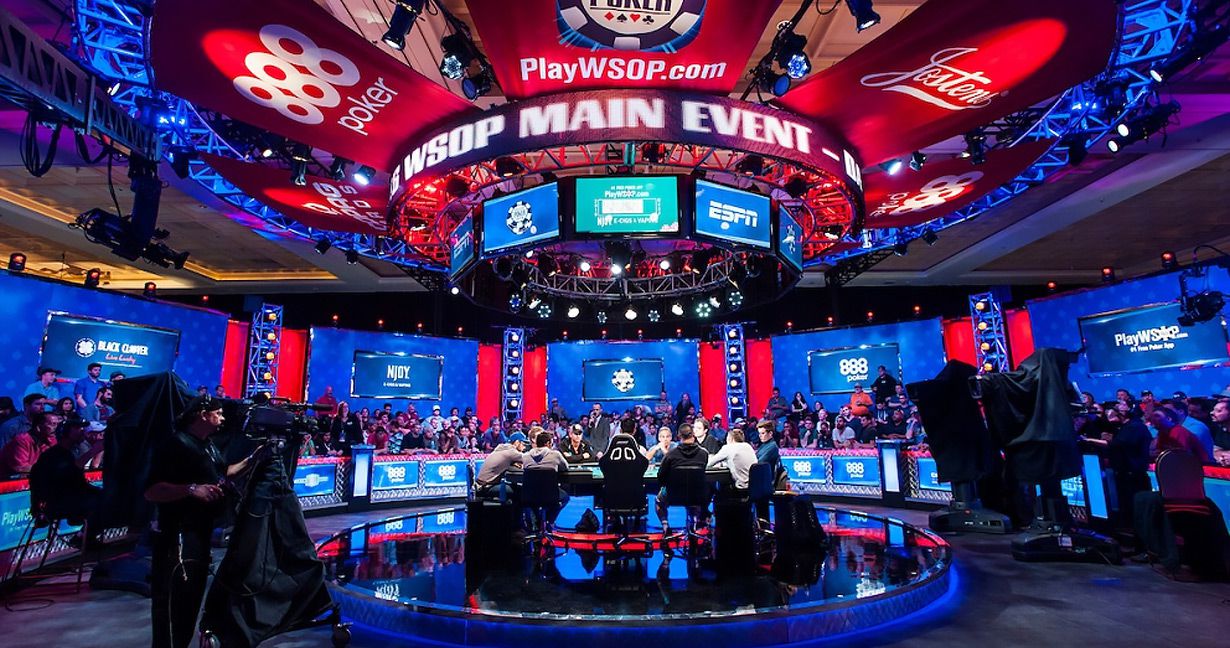The Impact of Hole Card Cameras on Poker’s Popularity
Poker’s rise to mainstream fame owes much to the advent of television broadcasts, but one innovation truly revolutionized how fans connected with the game: the hole card camera. Introduced in 1999, this technology enabled viewers to see what cards players were holding during televised events, fundamentally transforming the viewing experience. The World Series of Poker (WSOP) benefited tremendously, with audience numbers soaring in the years that followed. This raises a compelling question-would WSOP maintain its widespread appeal if audiences were no longer able to see the players’ private cards?

Why Viewing Hole Cards Revolutionized Poker Broadcasting
Before the introduction of hole card cams, television poker broadcasts were relatively uneventful. Viewers often had to wait for the final showdown to discover what cards players held, leading to a less immersive experience and limited audience interaction. When the ability to see hole cards was added, however, everything changed.
Knowing exactly what each player was holding allowed spectators to become armchair experts, dissecting strategies, second-guessing big moves, and cheering for their favorites with a sense of full engagement. Rather than witnessing a string of obscure decisions, fans could now tell if a player was attempting a bold bluff or genuinely held the strongest possible hand. This transparency drew casual viewers into the action, making it easy for anyone-novice or expert-to form opinions and root for particular outcomes.
The result was a vibrant, participatory culture around televised poker, where every hand became a mini-drama and audience opinions abounded. Without this behind-the-scenes view, poker would almost certainly have remained a niche interest for dedicated players and superfans.
Entertainment Value: From Passive Viewing to Shared Strategy
One of the most significant aspects of showing hole cards is how it invites viewers to feel as though they’re “playing along.” With access to all the information, fans can analyze each situation and debate the logic behind player choices-providing a compelling sense of involvement and excitement. The fun of watching poker isn’t just about the cards themselves but about understanding the psychological battle, deciphering bluffs, and feeling connected to the high-stakes decision-making.
When audiences know the player’s cards, they deeply engage with the story unfolding, rooting for big hero calls or epic bluffs. The audience’s collective knowledge can lead to impassioned reactions-“Why did they fold?” or, “How could she make that call?”-which keeps viewers entertained and emotionally invested throughout the broadcast.
Without this transparency, poker’s tense decision-making moments would lose much of their intrigue, as viewers are left guessing the true stakes of every bet and raise.
Why Texas Hold’em Became the TV Favorite
The explosion in popularity of Texas Hold’em isn’t driven solely by its gameplay mechanics or its status as a staple of professional poker. A major factor is that it’s ideally suited for televised entertainment. With only two private cards per player, camera technology could easily capture and display each hand, making it accessible for production teams and engaging for audiences.
Other poker formats, such as Seven Card Stud, are more complex to broadcast due to the greater number of hidden and exposed cards, which can complicate both the technology and the storytelling on television.

Image: YouTube
WSOP’s decision to broadcast players’ private hands proved to be the turning point in the game’s mass appeal. Fans could follow the logic behind expert decisions and anticipate upcoming plays, transforming the program’s pacing and drama.
Would Poker Be as Compelling Without Hole Card Visibility?
Poker certainly existed on television prior to the hole card cam, but it struggled to attract viewers outside the most dedicated enthusiasts. For the average person, watching professional players make decisions without knowing the underlying cards was a confusing-and often dull-experience.
Contemporary audiences might be a bit more sophisticated, with many viewers familiar with poker basics and able to follow complex betting patterns. Live streams and some final table broadcasts have even experimented with delayed hole card reveals, and these still drew significant viewership among die-hard fans. But for the wider audience that sustains high production costs and makes poker a TV sensation, the lack of visible hands would likely erode interest and make the action far harder to follow.
The gap between casual and hardcore fans would widen, and the general buzz around major tournaments could quickly diminish.
Potential Consequences of Losing Hole Card Coverage
Gambling regulations are subject to rapid change in the United States and elsewhere. It’s not impossible to imagine a future where authorities restrict or prohibit the broadcast of players’ hole cards during live events. Should such regulations be enacted-say, in a jurisdiction like Nevada-the WSOP, and televised poker as a whole, could face a critical challenge.
When online poker was restricted in the U.S., there was a noticeable dip in poker’s mainstream appeal and in WSOP viewership. Losing the ability to show hole cards would likely have an even more detrimental impact. Producers would face the formidable task of creating captivating content without the primary storytelling tool that draws audiences in.
While some dedicated fans might still tune in for elite player lineups or high-stakes drama, the mainstream audience-composed of viewers looking for engaging entertainment, not just poker strategy-would likely lose interest. Expecting casual viewers to piece together the details of each hand without knowing what is at stake during every tense moment would be asking too much from most spectators.
Conclusion: Hole Card Cams Remain Vital for Televised Poker
Even seasoned poker enthusiasts who appreciate the game’s strategic complexities admit that watching high-level poker without knowledge of the private cards can quickly become monotonous. While the novelty might hold for a short time, extended coverage without this dimension tends to lose excitement and mass appeal.
The success of televised poker, particularly events like the WSOP, is tightly linked to the introduction and ongoing use of hole card cameras. This simple yet profound innovation not only opened up the world of professional poker to a wider audience but also fostered a deep sense of engagement and community among fans. It’s difficult to imagine poker broadcasts ever reaching the same level of popularity-or enjoyment-without it.
For producers, players, and fans alike, the hope is that we’ll never have to return to a world where poker’s most vital cards remain a secret until the very end.













